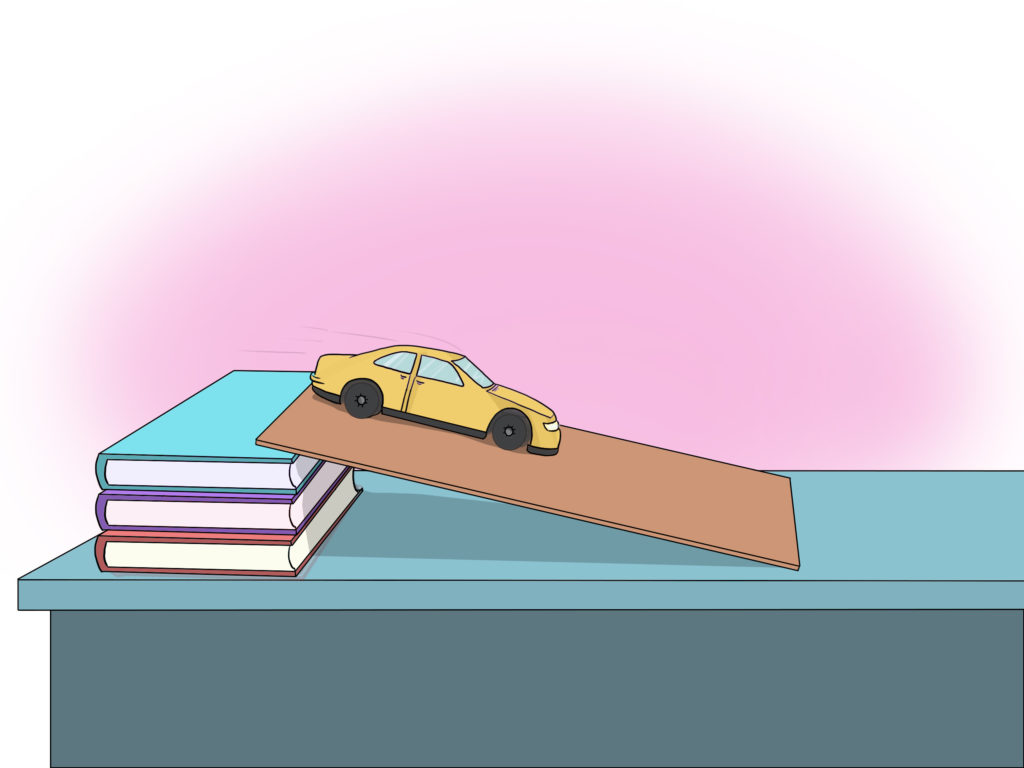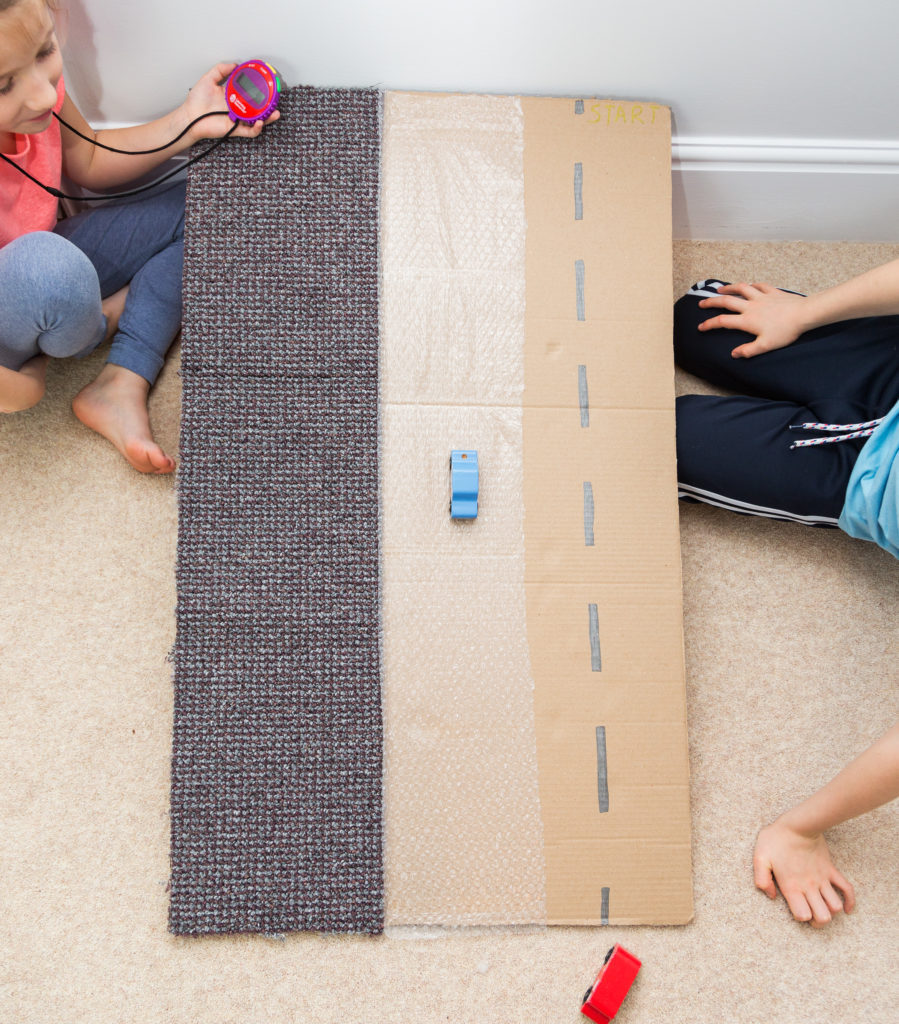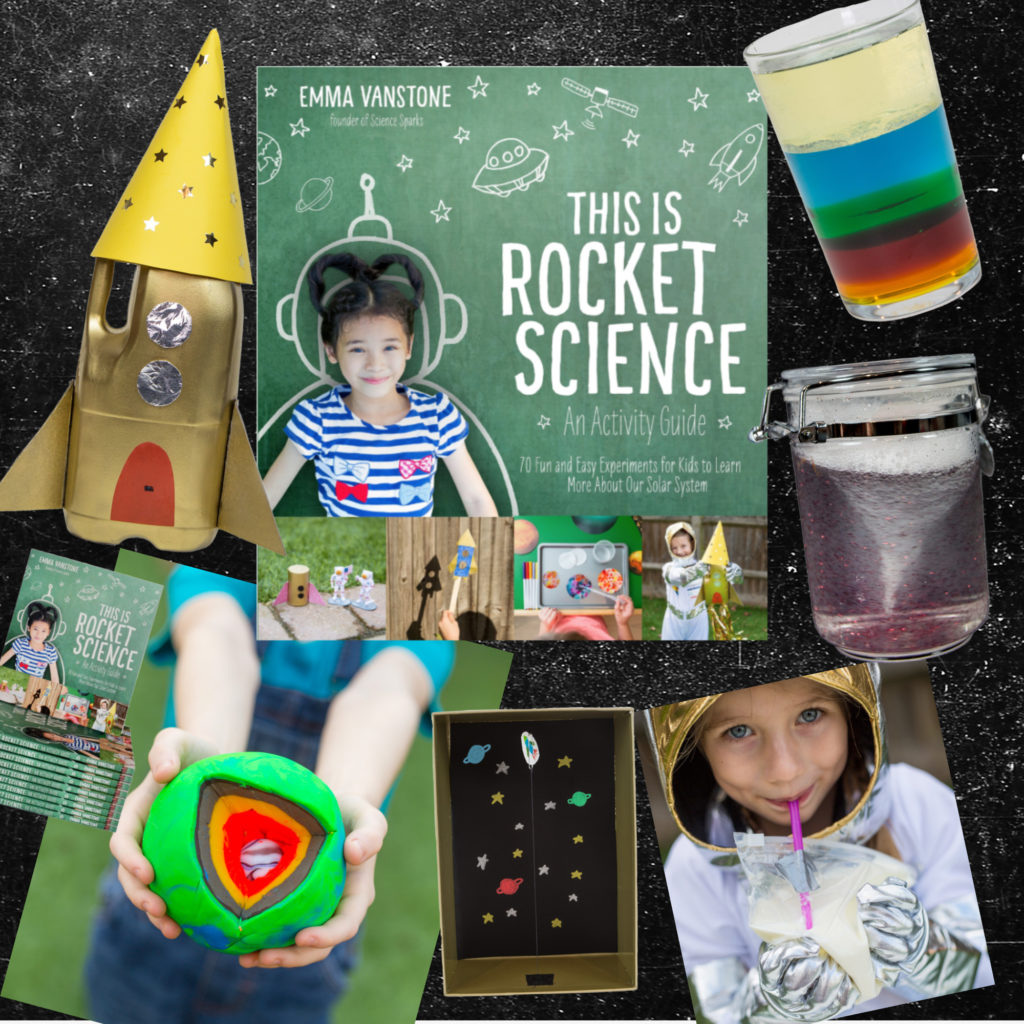All moving objects have momentum.
Another way to think about momentum is how hard it is to stop a moving object. It’s harder to stop an object moving quickly than an object moving slowly.
What is the momentum equation?
All moving objects have momentum. Momentum is a vector quantity which means it has size AND direction.
Momentum (kg m/s ) = mass ( kg ) x velocity (m/s )
Easy way to demonstrate momentum
One very simple way to demonstrate momentum is to roll a small ball or toy car down a ramp, so it collides with another ball or toy car at the bottom.

As the ball or car rolls down the ramp, its momentum increases as it picks up speed.
The object at the bottom is stationary until the first object collides with it. During the collision, momentum is transferred from the rolling object to the stationary object, which then starts to move.
The total momentum remains the same after the collision as momentum is always conserved, but as both balls now have momentum, the object that rolled down the ramp has less momentum than it did before the collision, as some has been transferred to the other ball.
What is the relationship between mass and momentum?
You can use colliding balls to demonstrate this too.
This time roll a smaller ball down the ramp; a smaller ball has a smaller mass and a smaller momentum. This means the stationary ball will move further after a collision with a larger ball than a smaller ball.
Why do objects stop moving if momentum is always conserved?
If momentum is always conserved, why do the balls eventually stop moving? The balls eventually stop because other forces are acting on them, such as air resistance and friction which reduce the speed the objects travel at.
One way to demonstrate the effect of friction is by making and testing a friction ramp.
Toy cars travel more slowly down the ramp lanes that are covered in a rough surface as there is more friction acting on the car, slowing it down.

My book This IS Rocket Science has lots more science activity ideas for learning about forces. I would love you to take a look.
Last Updated on January 12, 2023 by Emma Vanstone


Leave a Reply